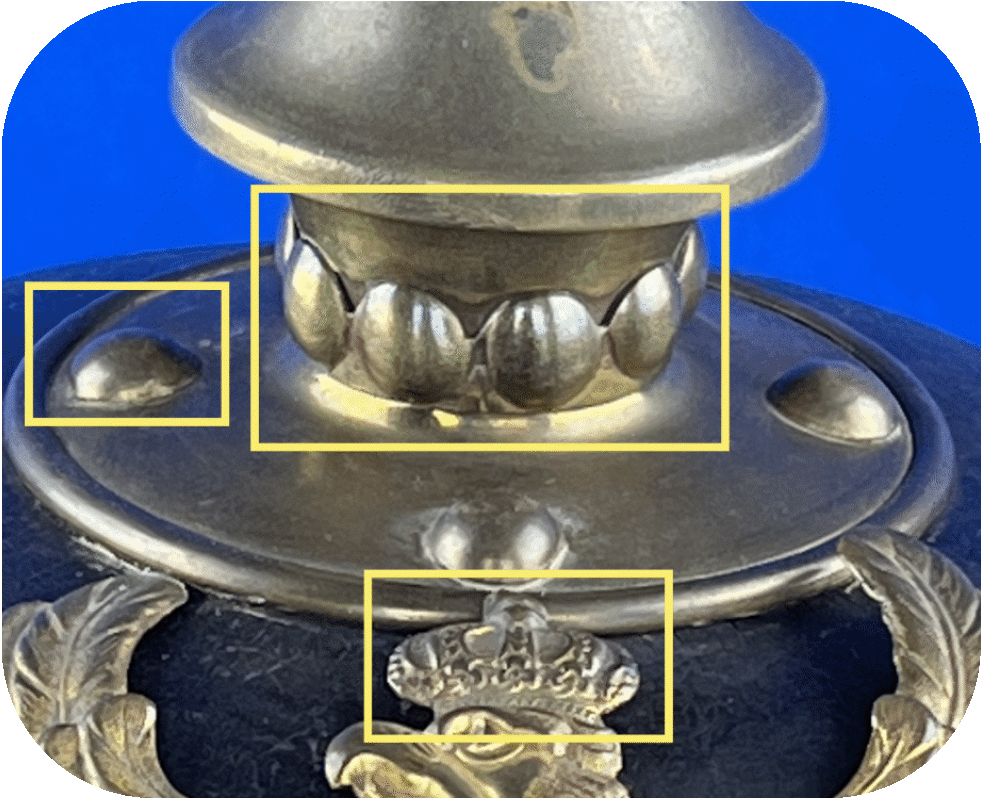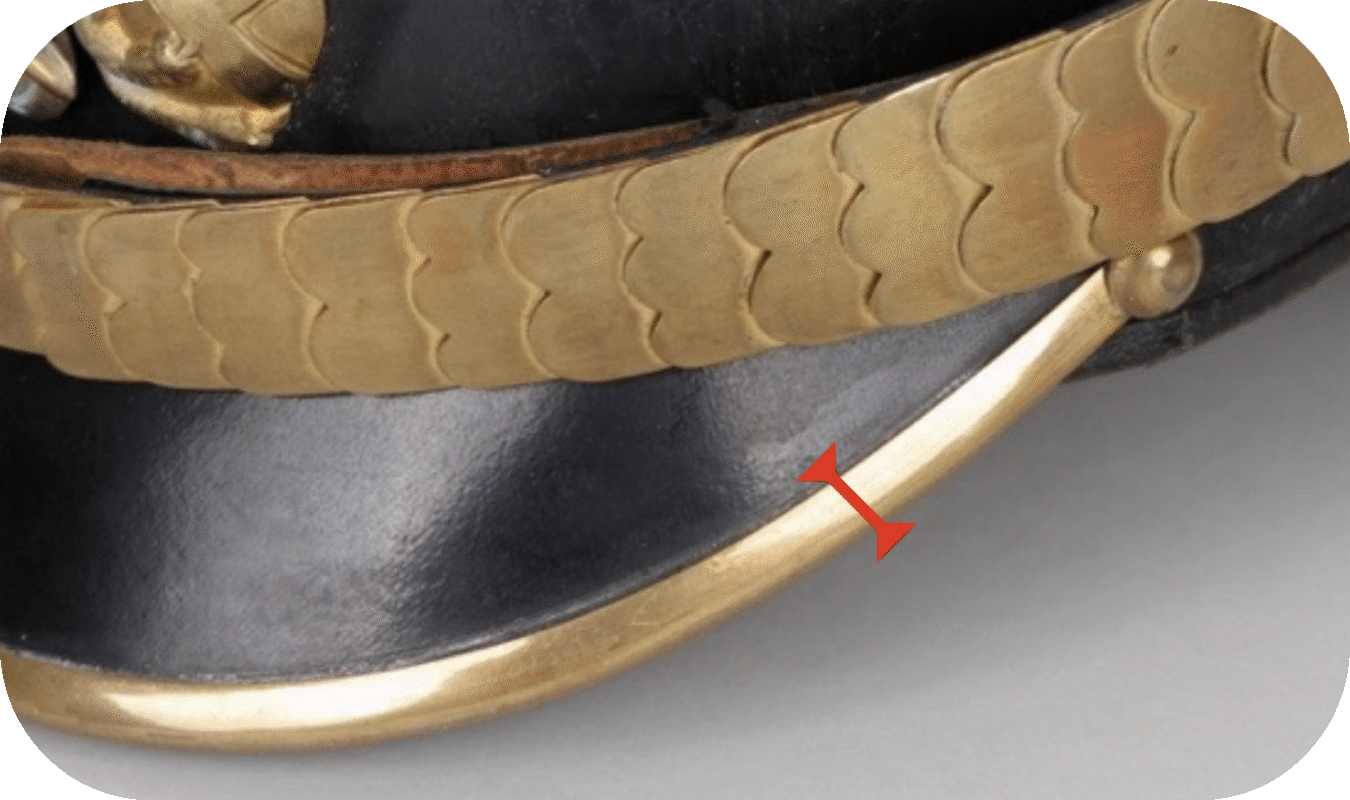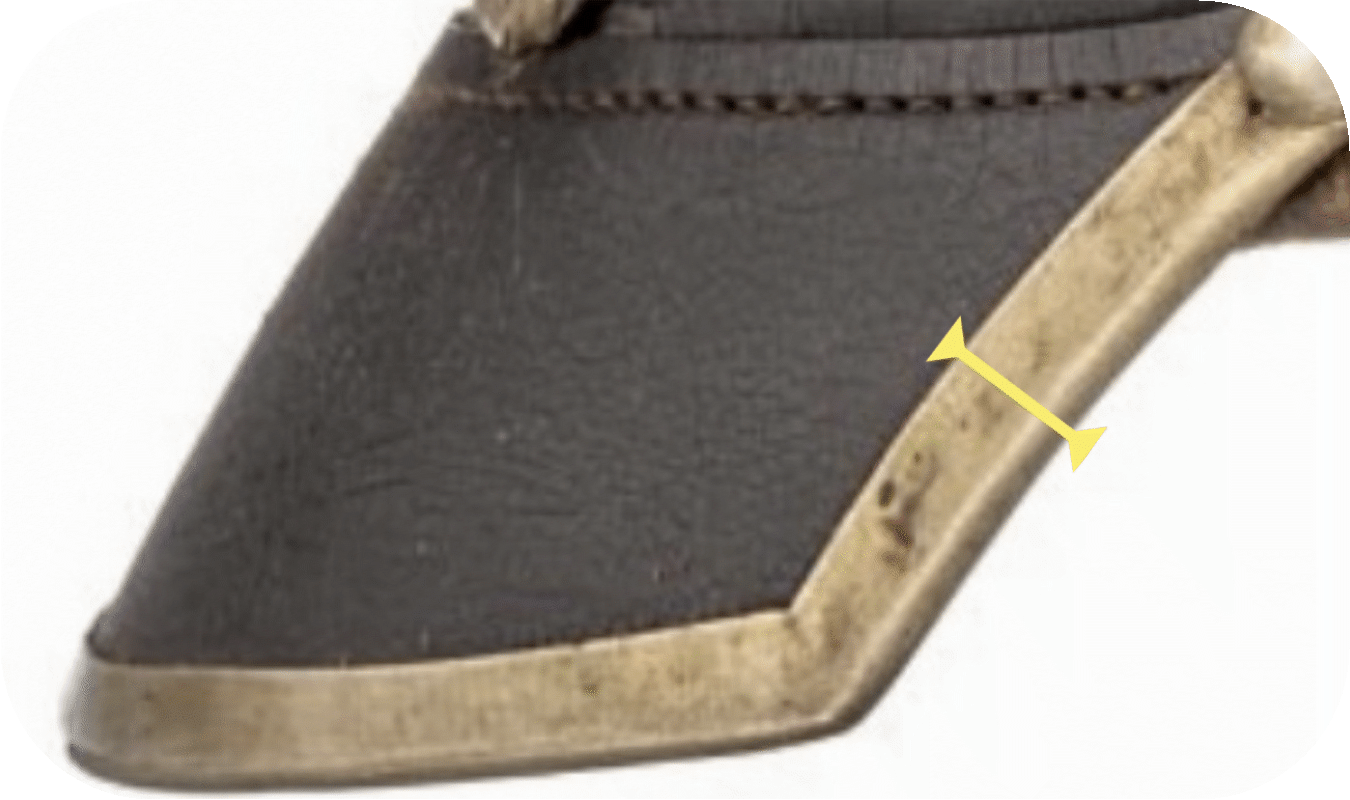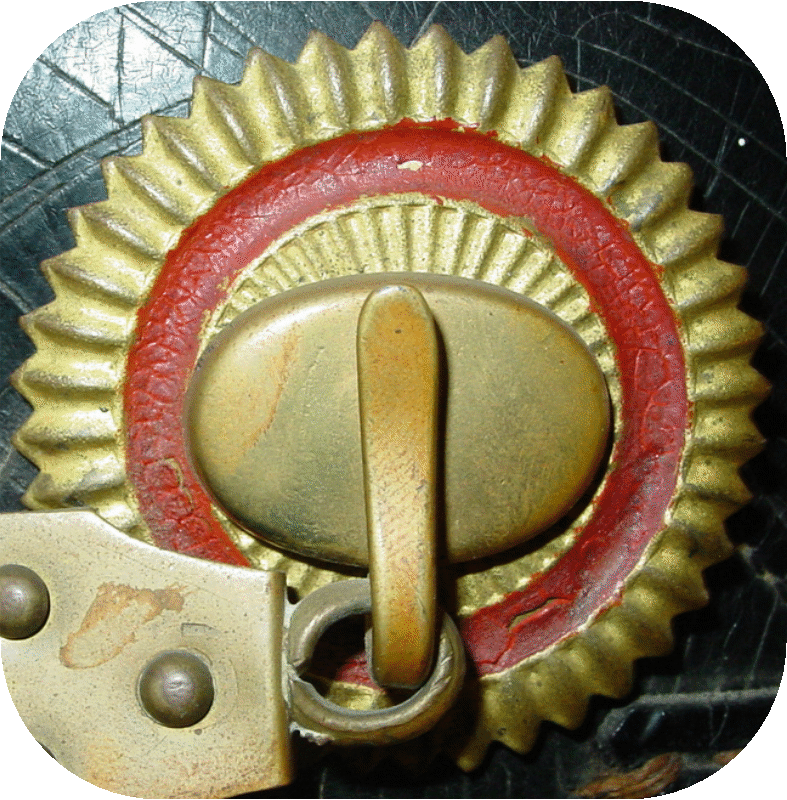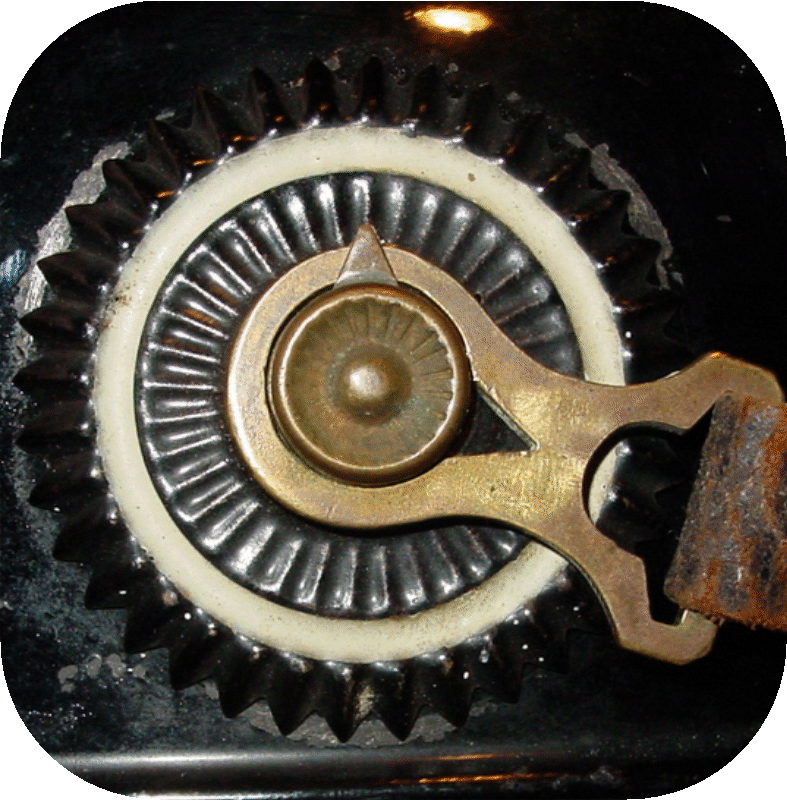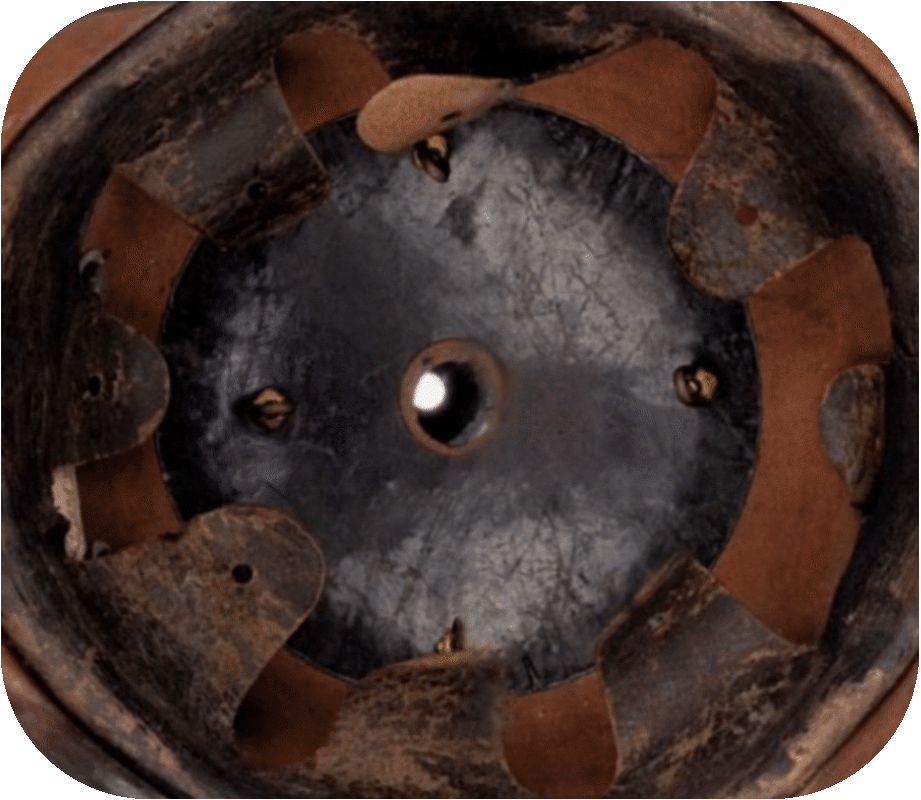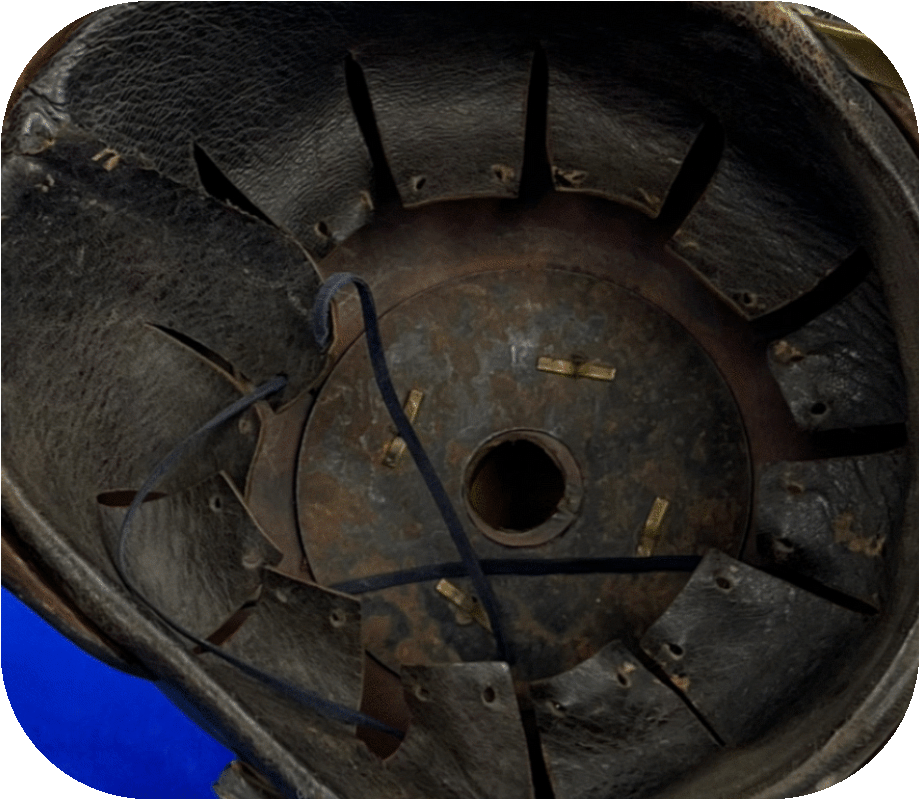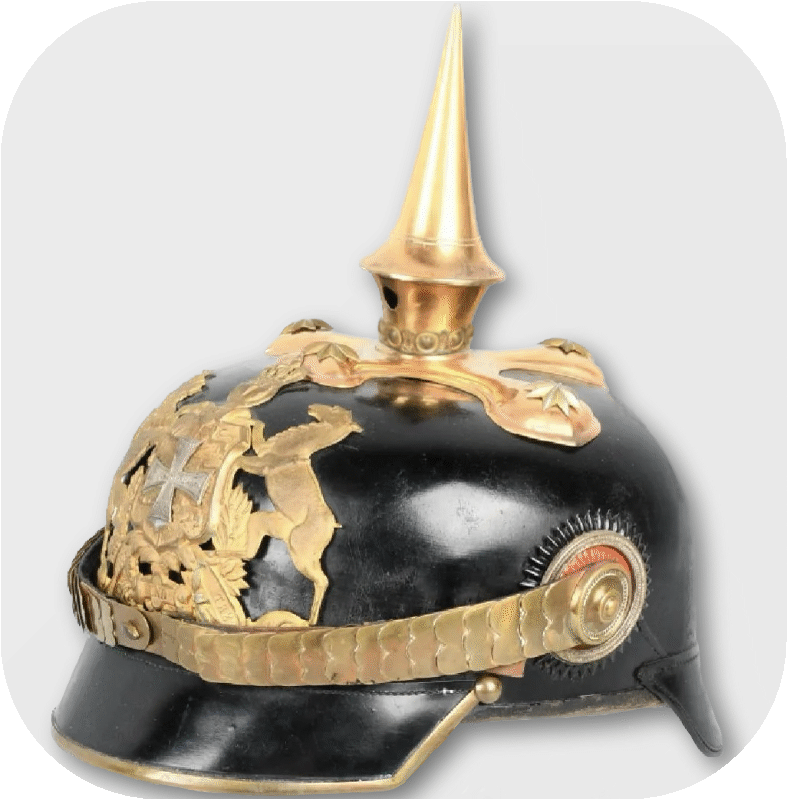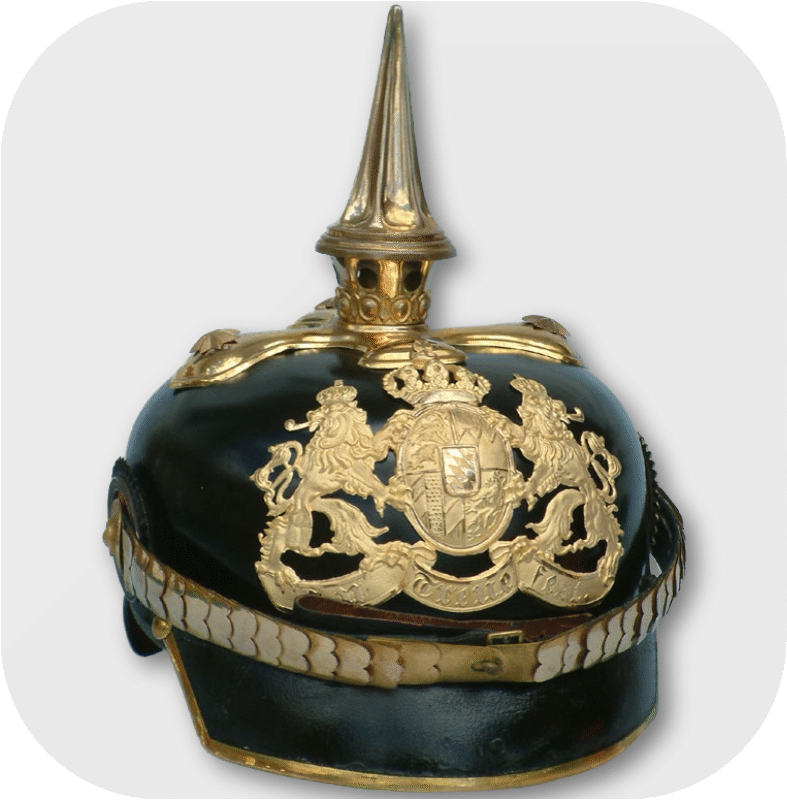Characteristics of officer‘s pickelhauben
However, there were also different specifications, which is why an officer's pickelhaube, if you know them, can be easily recognized as such. This was important so that the soldiers could recognize their commanders in the thick of battle as easily as possible.
An officer's pickelhaube can be identified by the following obvious characteristics in which it differs from the helmet for enlisted men:
- The spike was slightly higher and had a circumferential, engraved ring in the lower third of the cone (Figure 1).
- The neck of the spike on the spikebase had only 2 ventilation holes and was decorated with a more elaborate pearl ring. On enlisted men's pickelhauben, the pearl ring was teardrop-shaped at first (Fig. 2), but from the M1887 helmet on, it was just a circumferential bulge (Fig. 3).
- The spikebase for attaching the spike to the leather body was attached to the helmet with star-headed set of screws/split-pins instead of half-round-headed ones (cf. Figs. 1 and 2).
- The ring on the cockades was not painted in color (Fig. 9), but consisted of a silver-plated or brass slip-on ring. Until about 1867, the ring had a braid decoration (Fig. 4 left), after that a decoration of 2 rings with fishbone decoration was used for officers' helmets and the cockades had a different diameter (Fig. 4 right).
- The visor trimm around the edge of the front visor was smaller and rounder than on the enlisted helmets, with a maximum width of 0.6 cm. For enlisted men, it was more angular and 0.7 to 1.0 cm wide (cf. Figs. 5 and 6).
- The plates on the pickelhauben were more detailed and the spaces between the individual brackets of the crowns were always voided, whereas these free spaces were only indicated on enlisted men's helmets (cf. Figs. 7 and 2). The officer's plates were always fastened with threaded pins and square nuts soldered to the back. Over the years, various fastening methods were used for enlisted men's helmets.
- After 1887 (Cavalry, Artillery and Train from 1894) almost only the officers wore chinscales on their helmets. Among the enlisted men, only the Guard infantry and the Grenadier regiments still wore the chinscales for normal service. The other enlisted men wore them only on parade or garrison duty until 1915. The rosettes for infantry enlisted men's helmets were first replaced by a hook and thorn buckle attachment (Fig. 8), and from 1891 (cavalry, artillery and train from 1894) by the M91 attachment system (Fig. 9). Officers retained the split pin rosettes on their helmets until the introduction of the M15. After that, the M91 attachment for the chinscales was also introduced for officers, but the M91 buttons were covered with a cover in the design of the split-pin rosettes.
- Even after 1895, the back spine of officer's pickelhauben did not have ventilation slides in the upper third, as enlisted men's helmets had from that year on. However, officers were allowed to equip the rail with better ventilation, as was used on Colonial helmets. But this option was very rarely used, I have only seen one officer's helmet with this extra ventilation.
- The helmet visors of the officer's helmets had slightly different dimensions than those of the enlisted men's helmets, but they are more easily recognized by the fact that they were colored on the underside. The back visor was covered with red linen, the front visor with green linen (Fig. 10). The undersides of the enlisted men's helmets always showed bare leather (from this one can sometimes recognize made-up officer's helmets or property helmets of one-year volunteers, which had almost all the other characteristics of an officer's pickelhaube in some cases).
- The liner inside the helmet consisted of a very fine sweatband of goatskin, about 6 cm wide, and was lined in the middle with a freely chosen fabric (often silk) (Fig. 10). Enlisted men's helmets had only a lining with 9 tongues of thicker sheepskin or goatskin (Fig. 11). Until about 1880, officer's helmets also had a leather lining with tongues, but this was finer, there were more tongues and, in contrast to the enlisted men's helmets, these were cut straight (cf. Figs. 12 and 11).
Different from the just mentioned officers' pickelhauben, officers from Wuerttemberg, Bavaria, and Hesse wore helmets with the following additional characteristics:
Wuerttemberg officers' pickelhauben (Figure 13):
- Squared front visor
- Cross fitting instead of a round spikebase
Bavarian officers' pickelhauben (Figure 14):
- Squared front visor
- Cross fitting instead of a round spikebase with 5 ventilation holes
- Fluted spike
Hessian officers pickelhauben (Figure 15):
- Cross fitting instead of round spikebase
- Half-round head screws/splints instead of stars for fastening the cross fitting. Only the IR115 with silver plated stars
- Fluted spike
- Except the Field-Artillery without pearl ring
- Back spine often with 2 half-round head screws/splints visible from the outside (like old Prussian dragoon helmets)


